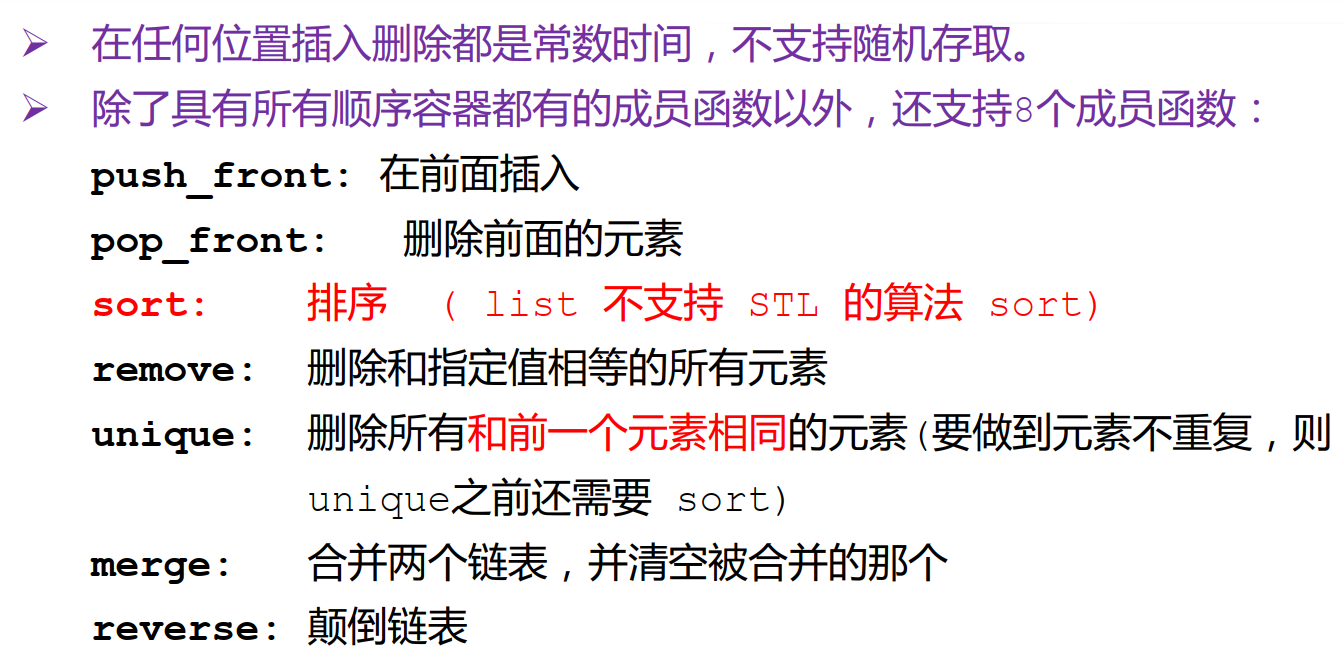vector
#include <iostream>#include <vector>using namespace std;template<class T>void PrintVector(T s, T e) {for(; s != e; ++s)cout << *s << endl " ";cout << endl;}void main() {int a[5] = {1, 2, 3, 4, 5};vector<int> v(a, a+5); // 将a中的元素给v// 两个随机迭代器相减,输出 1) 5cout << "1) " << v.end() - v.begin();// 2) 1 2 3 4 5cout << "2) "; PrintVector(v.begin(), v.end());v.insert(v.begin() + 2, 13); // 在数组中插入元素13// 3) 1 2 13 3 4 5cout << "3) "; PrintVector(v.begin(), v.end());v.erase(v.begin() + 2); // 删除位于 begin() + 2的元素// 4) 1 2 3 4 5cout << "4) "; PrintVector(v.begin(), v.end());vector<int> v2(4, 100); // v2 有4个100// 将v的一段插入v2的开头v2.insert(v2.begin(), v.begin() + 1, v.begin() + 3);// 5) v2: 2 3 100 100 100 100cout << "5) "; PrintVector(v2.begin(), v2.end());// 删除 v 上的一个区间,即 2,3v.erase(v.begin() + 1, b.begin() + 3);// 6) 1 4 5cout << "6) "; PrintVector(v.begin(), v.end());}
vector实现二维数组
vector<vector<int> >这里要把最后两个”>”分开,不然有的编译器会认为是右移运算符#include <iostream>#include <vector>using namespace std;void main() {vector<vector<int> > v(3);for(int i = 0; i < v.size(); ++i)for(int j = 0; j < 4; ++j)v[i].push_back(j);for(int i = 0; i < v.size(); ++i) {for(int j = 0; j < v[i].size(); ++j)cout << v[i][j] << " ";cout << endl;}}
deque
双向链表list


#include <list>#include <iostream>#include <algotirhm>using namespace std;class A {private:int n;public:A (int n_) { n = n_;}friend bool operator<(const A & a1, cosnt A & a2);friend bool operator==(const A & a1, const A & a2);friend ostream & operator << (ostream & o, const A & a);};bool operator< (const A & a1, const A & a2) {return a1.n < a2.n;}bool operator == (const A & a1, const A & a2) {return a1.n == a2.n;}ostream & operator << (ostream & o, const A & a) {o << a.n;return o;}template <class T>void PrintList(const list<T> & lst) {// 不推荐的写法,还是两个迭代器为参数比较好int tmp = lst.size();if(tmp > 0) {typename list<T>::const_iterator i;i = lst.begin();for(; i != lst.end(); ++i)cout << *i << ",";cout << endl;}}void main() {list<A> lst1, lst2;lst1.push_back(1); lst1.push_back(2);lst1.push_back(3); lst1.push_back(4);lst1.push_back(2);lst2.push_back(10); lst2.push_back(20);lst2.push_back(30); lst2.push_back(30);lst2.push_back(30); lst2.push_back(40);lst2.push_back(40);// 1) 1,3,2,4,2cout << "1) "; PrintList(lst1);// 2) 40,20,10,30,30,30,40cout << "2) "; PrintList(lst2);lst2.sort();// 3) 10,20,30,30,30,40,40cout << "3) "; PrintList(lst2);lst2.pop_front();// 4) 20,30,30,30,40,40cout << "4) "; PrintList(lst2);lst1.remove(2); // 删除所有和A(2)相等的元素// 5) 1,3,4cout << "5) "; PrintList(lst1);lst2.unique(); // 删除所有和前一个元素相等的元素// 6) 20,30,40cout << "6) "; PrintList(lst2);lst1.merge(lst2); // 合并lst2到lst1并清空lst2// 7) 1,3,4,20,30,40cout << "7) "; PrintList(lst1);// 8)cout << "8) "; PrintList(lst2);lst1.reverse();// 9) 40,30,20,4,3,1cout << "9) "; PrintList(lst1);lst2.push_back(100); lst2.push_back(200);lst2.push_back(300); lst2.push_back(400);list<A>::iterator p1, p2, p3;p1 = find(lst1.begin(), lst1.end(), 3);p2 = find(lst2.begin(), lst2.end(), 200);p3 = find(lst2.begin(), lst2.end(), 400);// 将[p2, p3)插入p1之前,并从lst2中删除[p2, p3)lst1.splice(p1, lst2, p2, p3);// 10) 40,30,20,4,200,300,3,1cout << "10) "; PrintList(lst1);// 11) 100,400cout << "11) "; PrintList(lst2);}
模板作为参数的写法
- dev中在模板参数类型前面要加typename
- splice的用法


